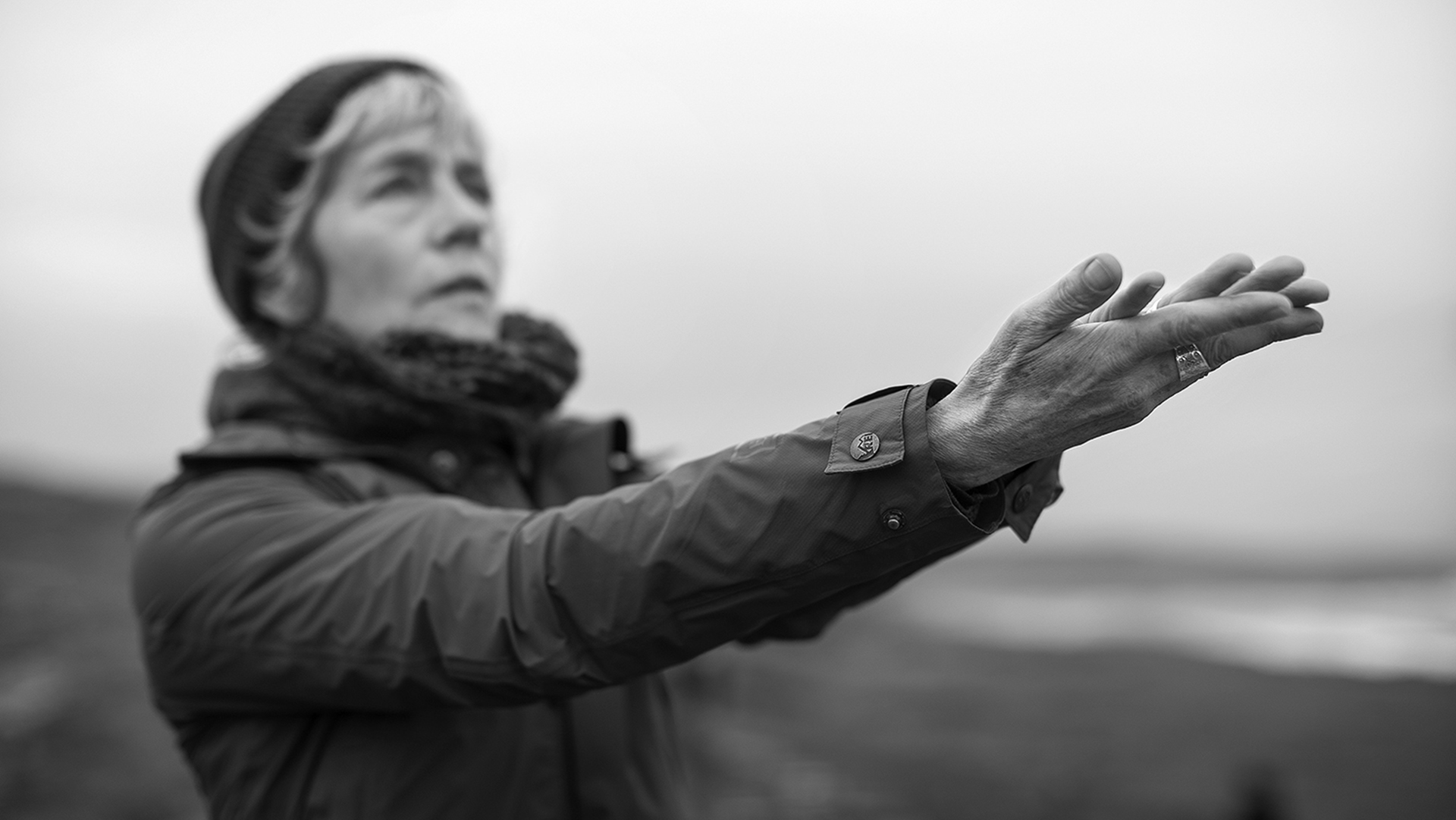
SANDY SILVA was among the first to combine body percussion techniques and contemporary movement with percussive dance. Over the past three and half decades, Sandy has developed a personal dance vocabulary based on the percussive movement practices of Hungary, Appalachia, Cape Breton, and Andalusia, and the idioms of circus, contemporary dance, and theater. Silva’s choreography weaves a dialogue between these gestural and rhythmic repertoires, blending the local and global in a contemporary corporeal response to her world.
Born in Riverside California, Sandy studied dance anthropology at Evergreen State College. As part of her studies, Sandy traveled to Spain, Hungary, Cape Breton, Nova Scotia, Ireland, Turkey, Morocco, and Brazil to engage ethnographically with world percussive dance forms. With deep respect for these varied movement traditions she spent decades studying and deconstructing their vocabularies, allowing them to encounter one another in her own body. In the late-1990s she began sharing her anomalous approach to percussive dance through workshopping and performing throughout Québéc, before making Montreal her home in 2004 to work as a featured performer with La Bottine Souriante and 7 Doigts de la Main’s Fibonacci Project. Sandy also began her teaching career at Québéc’s world-renowned National Circus School/École Nationale de Cirque and as a visiting artist at five International Body Music Festivals. In 2023, Sandy was the recipient of the McKnight International Choreographer award.
Sandy’s compositions and body percussion draw upon traditional art practices of Turkish Usul rhythms, African-American juba, Québécois gigue, Celtic mouth music, Andalusian palmas, and Hungarian legényes. Silva’s choreographies integrate voice with rooted sounds and gestures to evoke themes of travel, journey, and migration. In her teaching, whether with beginners or experienced professionals, Sandy grounds collective experience through a common pulse, always with an aspiration towards nourishing personal practice suited to each participant’s skill, capacity, and genre.
In 2014 Sandy began creating and producing films with acclaimed filmmaker Marlene Millar. Their ongoing collaboration, the Migration Dance Film Project has yielded seven international award-winning films combining body percussion, song, rhythm, movement, and story.
Artistic statement
My professional life centers on the craft of bodily rhythm-making, navigating movement to connect sound through depth and repetition in order to subtly express human themes. Engaging percussive body rhythms and rhythmic footwork in my choreography, I seek to transcend the world of sound and gesture to engage emotionally, ritually, and meditatively with cultural form. My compositions come out of 35 years of work with traditional and folk artists, including Kevin Burke and La Bottine Souriante, and engaging archival recordings of Québécois and Celtic mouth music. The flow of these syllables allows for play with meter, texture, and dynamic range. I use these vocal and body rhythms as an accessible lingua franca for teaching, crossing languages and borders. Having had the sounds of call-and-response singing in my ears for years, I work to create a rhythmic syllabic soundworld which serves not only as a soundscape for movement but also animates dancer-singers internally as they feel sound, make sounds, and are sound.
In 2015, I began working with film maker Marlene Millar which led to the creation of the Migration Dance Film Project . Through this work, I have explored how film can work as a complimentary partner to percussive dance. Support from previous grants (Conseil des arts et des lettres du Québec and Canada Arts Council) has enabled me to adapt my choreography for the camera and led to six award-winning short films which are part of a full-length film project. As someone trying to re-imagine the incorporation of body percussion and percussive dance, I feel invigorated to explore the potential of the dance/media partnership and to disseminate percussive dance in a medium that expands the form’s precision, subtlety, and vigor. My work with film is guided by a desire for artistic innovation and posterity. In an age of video, film, as directed by experienced dance-for-camera artists, offers the opportunity to capture new innovations in body percussion and percussive dance and to share those with a wider audience.


